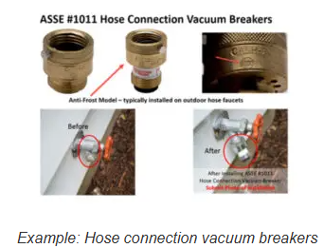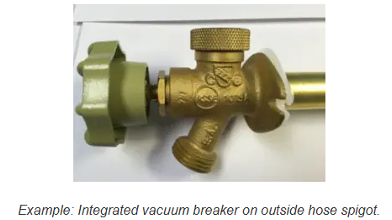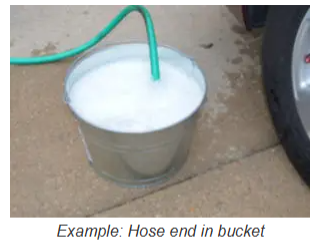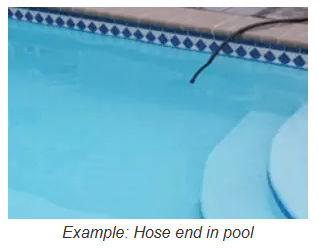Cross-Connection Control Program Overview
A cross-connection is an actual or potential connection between the safe drinking water (potable) supply, and a source of contamination or pollution. Cross-connections can result in a hazardous event known as backflow, which can draw those contaminants into your drinking water supply.
Delaware's Department of Health Code 4462 prohibits hazardous interconnections to public water systems and requires all public water systems develop a comprehensive Cross-Connection Control Program.
Frequently Asked Questions for Residential Customers
What is a Cross-Connection?
A cross-connection is an actual or potential connection between the safe drinking water (potable) supply and a source of contamination or pollution. State plumbing codes require approved backflow prevention methods to be installed at every point of potable water connection and use. Cross-Connections must be properly protected or eliminated.
I’ve never had an inspection before. Why do I need one now?
A public water supplier may determine that specific residential water service connections shall be inspected (with appropriate notification in advance) for potential cross-connection hazards. Causes for residential exterior inspections are lawn irrigation systems.
How long does the inspection take?
A typical residential exterior cross-connection inspection takes 5-15 minutes.
Do I have to be present for the inspection?
No.
Who is responsible for completing the repairs, if necessary?
Building owners are responsible for costs associated with corrective action/non-compliance.
Is this inspection mandatory?
If a residential service connection owner is notified of a mandatory inspection, compliance is required. These inspections are conducted in order to ensure compliance with state regulations to maintain the safety of your drinking water.
Why do I need to test my backflow prevention assembly?
Just like any other mechanical device, backflow prevention assemblies are prone to wear and tear, and do break down from time to time. Regular testing is required in order to ensure that your device remains in proper working order.
How often should I test my backflow prevention assembly?
Delaware Uniform Plumbing Code requires Testable Assembly Backflow Preventers shall be tested by an ASSE Certified tester at least annually and at time of initial installation. A test record for each Backflow Preventer is required to be submitted to the local public water supplier as specified in the local Cross-Connection Control Program Plan.
Is any older, legacy equipment "grandfathered" in?
No, unless clearly indicated in the current Delaware plumbing or administrative code.
Vacuum Breakers for Hose Bib
A vacuum breaker will prevent the backflow of water from a potentially contaminated source, into the potable water lines.
 |
 |
Avoid these cross-connection hazards:
 |
 |
